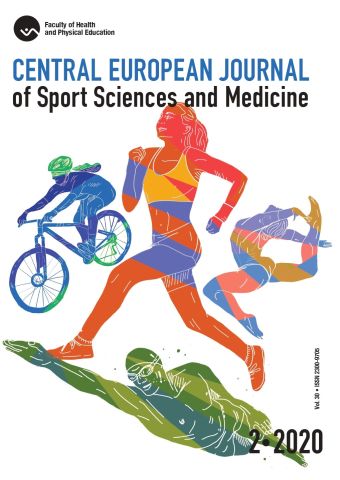
ISSN: 2300-9705
eISSN: 2353-2807
OAI
DOI: 10.18276/cej.2020.2-01




Lista wydań /
Vol. 30, No. 2/2020
Social and Political Aspects of the Development of Cycling in Pomorze Zachodnie (West Pomerania) in the Years 1945–1950
| Autorzy: |
Ryszard
Stefanik
Faculty of Physical Culture and Health Promotion, University of Szczecin Maciej Zawadzki Faculty of Health and Physical Education, University of Szczecin |
| Słowa kluczowe: | sport history years 19451950 physical culture |
| Data publikacji całości: | 2020 |
| Liczba stron: | 10 (5-14) |
Abstrakt
The article presents the determinants of the development of cycling in the areas incorporated by Poland in the first years after the Second World War.
The biggest contribution into this process was made by people from large cities, pre-war enthusiasts and athletes who undertook the hardships of social activity and the engagement of local youth. Sports organizations were controlled, but also supported, by state authorities that used mass events in the propaganda policy and actions aimed at integrating the Northern and Western Lands with the rest of the country. This was an important task due to the difficult living conditions and marauding groups of criminals for whom Pomorze Zachodnie constituted an area of criminal activity, mainly plundering former German property, as well as attacking. Polish settlers. The development of cycling in Szczecin was favored by the German infrastructure, including a concrete track often used in national championships.
At the end of 1949, sport in Poland was reorganized and centralized, making it similar to the Soviet model, where there was no room for social measures. The bourgeoisie clubs had to cease their activities, while the circles and clubs were created at workplaces and trade unions. Sports federations were liquidated and their place was occupied by sports clubs located within the structures of the state administration. The organizational changes were accompanied by the mass popularization of sport and increased financing for competitive sport from the state budget. The goal of such activities was to reach a wide group of young people for the needs of indoctrination, as well as to raise the level of sport to achieve more effective competition with Western countries.
Pobierz plik
Plik artykułu
Bibliografia
| 1. | Archives |
| 2. | APSz, Marshall Office in Szczecin - UWS, file number 1383, Associations and Unions, 1949-1950. |
| 3. | APSz, Provincial Committee - PC PUWP in Szczecin, file number 3466, Resolutions and executive functions of PC PUWP on the Sport, 1949. |
| 4. | APSz, PWRN in Szczecin, file number 11535, Minutes of organizational clubs’ meetings, 1949. |
| 5. | APSz, the Voivodship National Council - PWRN in Szczecin, file number 11477, Minutes of meetings of the Regional Cycling Federation, 1946-1949. |
| 6. | APSz, ZMiMRN in Szczecin, file number 246, Regional Cycling Federation in Szczecin, 1948-1951. |
| 7. | APSz, ZMiMRN in Szczecin, file number 520, Report on the activities of the City Committee of Physical Education and Military Training in Szczecin. |
| 8. | The State Archive in Szczecin - APSz, the City Board and National City Council - ZMiMRN in Szczecin, file number 240, “Odra” Sports Club, 1945-1949. |
| 9. | Press |
| 10. | “Głos Szczeciński” (1947-1950). |
| 11. | “Kurier Szczeciński” (1945–1950). |
| 12. | Literature |
| 13. | Godlewski, P. (2002). Sowietyzacja sportu w Polsce (lata 1948-1956). In: T. Jurek (ed.), Studia z dziejów kultury fizycznej (pp. 441455). Gorzów Wlkp.: PTNKF. |
| 14. | Pasko, A. (2012). Sport wyczynowy w polityce państwa 1944-1989. Kraków: AVALON. |
| 15. | Szymański, L. (2004). Kultura fizyczna i turystyka w polityce Polski Ludowej 1944-1989. Wrocław: AWF Wrocław. |
| 16. | Tuszyński, B. (1986). 100 lat Warszawskiego Towarzystwa Cyklistów, 100 lat kolarstwa polskiego. Warszawa. |